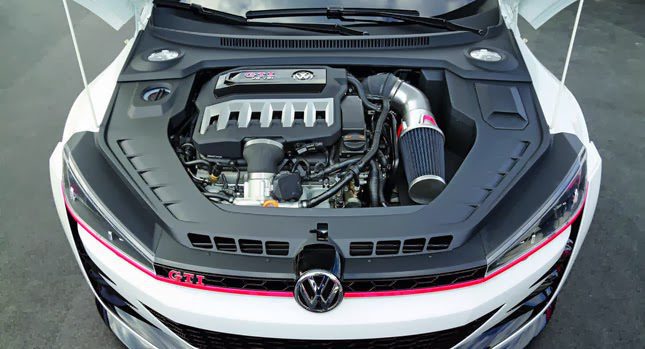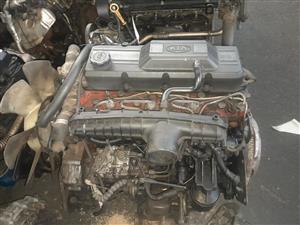Where to Acquire Dependable Import Engines for Any Vehicle Model
Where to Acquire Dependable Import Engines for Any Vehicle Model
Blog Article
Exploring the most up to date Technical Innovations in Import Engines and How They Enhance Driving Experience
In the realm of automobile engineering, the landscape of import engines is going through an extensive makeover driven by advanced technological innovations. From the evolution of turbocharged engines to the assimilation of crossbreed modern technology, the current improvements are reinventing the driving experience in means previously unimaginable. As import suppliers press the limits of performance and effectiveness with enhanced fuel shot systems and innovative engine monitoring options, the concern develops: Exactly how do these developments truly impact the means we engage with our automobiles when driving?

Advancement of Turbocharged Engines
In the vehicle market, the development of turbocharged engines has considerably transformed the landscape of efficiency and performance. Turbocharging, when mainly seen in high-performance sports cars, has now come to be a mainstream modern technology embraced by a vast array of vehicles, from portable hatchbacks to deluxe cars. The fundamental concept behind a turbocharged engine is simple yet reliable - by compeling more air right into the combustion chamber, it allows even more fuel to be melted, leading to enhanced power output.
Among the essential benefits of turbocharged engines is their capability to deliver more power from smaller sized, a lot more fuel-efficient engines. This downsizing fad has brought about a reduction in discharges without compromising efficiency, making turbocharging an appealing option for car manufacturers striving to satisfy rigorous environmental guidelines. Turbocharged engines offer improved torque at reduced RPMs, supplying chauffeurs with an extra dynamic and receptive driving experience.
As innovation proceeds to development, we can expect more developments in turbocharging, bring about even better degrees of efficiency and efficiency in the vehicle industry.
Developments in Gas Shot Equipments
Modern gas shot systems have developed to provide fuel much more effectively and exactly into the engine cylinders, improving total engine efficiency and gas effectiveness. One of the essential developments in fuel injection systems is the change from conventional port fuel shot (PFI) to more advanced direct gas shot (DFI) innovation.
Furthermore, the assimilation of electronic control units (ECUs) and sensors in gas injection systems has actually allowed for real-time modifications to sustain shipment based on numerous elements such as engine lots, temperature, and driving conditions. Additionally, innovations in fuel injector style, products, and spray patterns have added to cleaner burning and smoother engine operation.
Combination of Crossbreed Technology
The development of gas shot systems towards higher performance and efficiency has set the phase for the smooth assimilation of hybrid innovation right into modern-day engines. Crossbreed innovation incorporates the use of conventional interior burning engines with electrical propulsion systems, offering improved fuel effectiveness and minimized exhausts. By incorporating electrical motors and batteries into the powertrain, hybrid engines can supplement the interior burning engine throughout velocity or low-speed driving, therefore boosting overall performance.

Boosted Engine Administration Solution
What are the vital advancements in engine management systems that are improving the performance and effectiveness of contemporary engines? Engine administration systems have gone through considerable improvements to enhance engine efficiency and efficiency. One essential advancement is the combination of sophisticated sensors that continuously keep track of various parameters such as engine temperature level, air-fuel proportion, pop over to this web-site and exhaust discharges. These sensing units supply real-time data to the engine control system (ECU), enabling for precise modifications to be made to optimize burning procedures and fuel performance.
Furthermore, modern-day engine administration systems utilize innovative formulas and synthetic knowledge to examine the data accumulated by sensors and make dynamic changes to elements such as ignition timing, fuel shot, and turbocharger increase pressure. This degree of precision and versatility outcomes in enhanced engine responsiveness, increased power result, and lowered gas intake.
Furthermore, engine management systems currently include sophisticated analysis abilities that can detect and attend to issues such as misfires, sensing unit breakdowns, and gas system irregularities in real-time, consequently improving total engine dependability and long life. These developments in engine monitoring systems play a vital role in improving the driving experience by supplying optimal efficiency, gas efficiency, and dependability.
Influence of Lightweight Products
Integrating lightweight materials in engine manufacturing has actually revolutionized the automobile sector's approach to improving gas efficiency and performance. Using products such as carbon fiber, light weight aluminum, and titanium has considerably reduced the total weight of engines, causing enhanced power-to-weight proportions and raised gas economic climate. These lightweight products provide a higher strength-to-weight ratio contrasted to standard materials like steel, enabling for greater longevity without compromising efficiency.
Among the crucial benefits of using light-weight products in engine building is the decrease of inertia, causing quicker engine response times and enhanced overall lorry agility. In addition, the lighter weight contributes to reduce energy usage, making lorries extra eco-friendly by minimizing emissions.
Moreover, the implementation of lightweight Source materials in engine elements such as pistons, connecting rods, and crankshafts has actually made it possible for engineers to press the boundaries of performance without sacrificing integrity (import engines). This innovation has led the way for extra effective and effective engines that supply a superior driving experience while meeting strict emissions criteria
Conclusion
To conclude, the most recent technological advancements in import engines have significantly enhanced the driving experience. From the advancement of turbocharged engines to advancements in gas shot systems, combination of crossbreed technology, boosted engine administration systems, and the use of light-weight products, these technologies have actually jointly boosted efficiency, fuel performance, and general driving dynamics. As technology continues to breakthrough, we can expect a lot more interesting advancements in the future of import engines.
Modern gas injection systems have advanced to provide fuel a lot more successfully and precisely into the engine cylinders, enhancing general engine performance and fuel effectiveness - import engines. By incorporating electrical motors and batteries into the powertrain, crossbreed engines can supplement the inner combustion engine during velocity or low-speed driving, thus improving overall efficiency
What are the essential advancements in engine management systems that are enhancing the efficiency and efficiency of contemporary engines? Engine monitoring systems have actually undergone considerable innovations to optimize engine efficiency and performance. From the evolution of turbocharged engines to developments in gas shot systems, assimilation of hybrid innovation, improved engine published here administration systems, and the usage of light-weight products, these innovations have collectively enhanced efficiency, gas efficiency, and overall driving dynamics.
Report this page